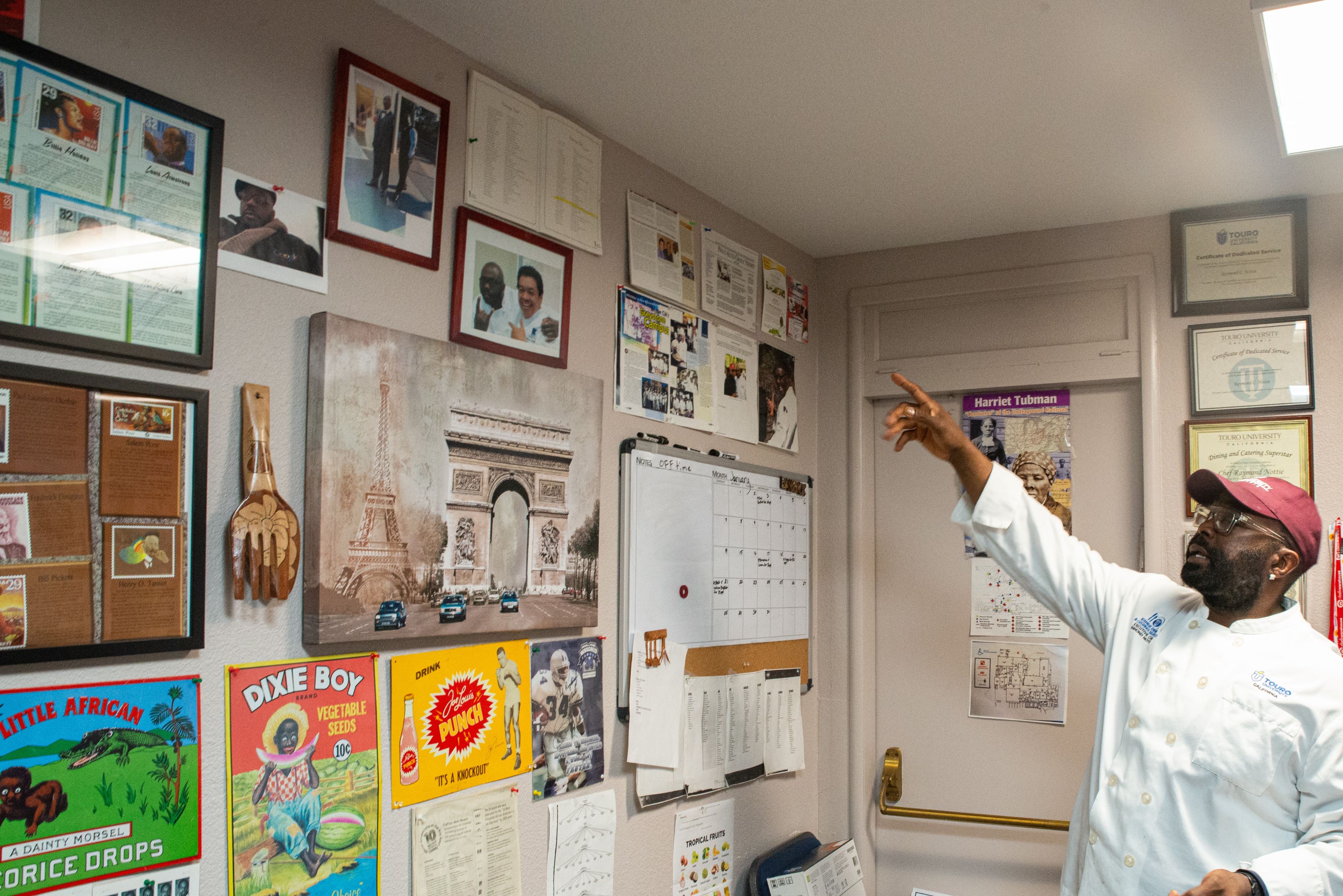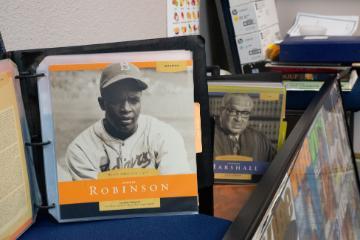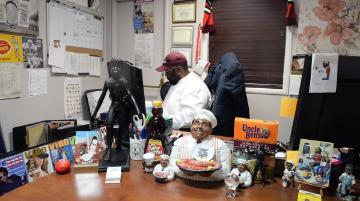Chef’s Collection of African American History
Raymond Nottie’s extensive collection of African American history reflects his commitment to honoring icons and inspiring future generations.

Walking into the office of Touro University California’s (TUC) Executive Chef Raymond Nottie, you are immersed in a collection that fills the entirety of the room.
The walls and shelves are filled with memorabilia and books on African American heritage that pays tribute to the resilience of notable musicians, athletes, and politicians.
 “For me, collecting gives me hope in whatever situation I’m going through,” says Nottie of his historical display of the achievements and struggles of people who paved the way for future generations. “As an African American man, it gives me hope that regardless of what you’re into, if it’s food, politics, or sports, if you stick with it and are passionate about it, you can be successful.”
“For me, collecting gives me hope in whatever situation I’m going through,” says Nottie of his historical display of the achievements and struggles of people who paved the way for future generations. “As an African American man, it gives me hope that regardless of what you’re into, if it’s food, politics, or sports, if you stick with it and are passionate about it, you can be successful.”
A native of Oakland, Nottie not only brings his culinary talents to TUC but also a deep passion for preserving the rich history of African Americans. Within the collection, the stories of iconic figures like Sugar Ray Robinson, Jackie Robinson, Joe Louis, Ray Charles, and Thurgood Marshall come to life. These individuals, celebrated in their respective fields of boxing, baseball, music, and law, faced adversities with determination and a commitment to making a positive impact on their communities.
 Nottie’s collection is not a static display but a living history that connects to the present. It serves as a reminder that the struggles and achievements of the past continue to shape our present and influence our future. His commitment extends beyond the preservation of history; it involves actively sharing knowledge and insights with others. He views his role as an opportunity to engage with the next generation, imparting valuable lessons from the past and encouraging them to pursue their passions.
Nottie’s collection is not a static display but a living history that connects to the present. It serves as a reminder that the struggles and achievements of the past continue to shape our present and influence our future. His commitment extends beyond the preservation of history; it involves actively sharing knowledge and insights with others. He views his role as an opportunity to engage with the next generation, imparting valuable lessons from the past and encouraging them to pursue their passions.
“It makes me feel blessed to be where I am now, especially when I look at what these individuals did,” says Nottie. “When someone comes into my office, the collection is not a show-and-tell, this is for you to have a one-on-one with me. If nothing else, let them understand a little about the history of African Americans.”
